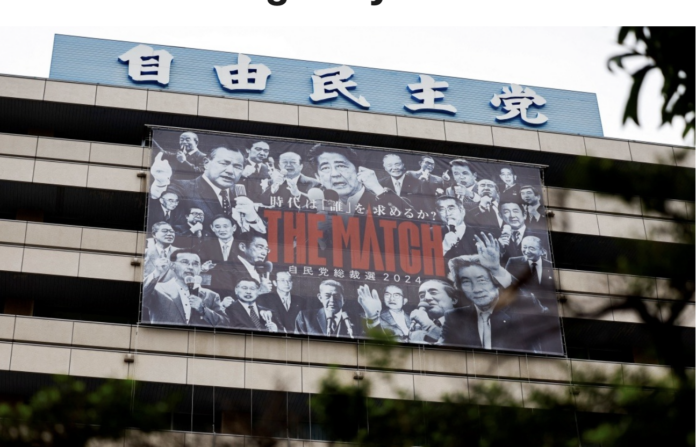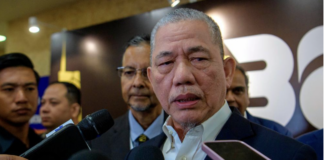TOKYO, Sept 27 – Japan’s ruling party will select a new leader on Friday to succeed Prime Minister Fumio Kishida, aiming to restore voter confidence shaken by a slush fund scandal, in an unprecedentedly crowded and closely contested race, Kyodo News Agency reported.
Former Defence Minister Shigeru Ishiba, Shinjiro Koizumi—the youngest candidate for the Liberal Democratic Party (LDP) —and Economic Security Minister Sanae Takaichi are pulling ahead of the other six contenders, according to a Kyodo News tally and analysis.
None of the candidates is assured of an outright majority in the first round of voting. Whoever takes the helm of the LDP will face the challenge of restoring party credibility ahead of a general election expected to be called sooner rather than later.
Their leadership skills will be tested as economic growth remains fragile amid rising household costs, while provocative actions by China, North Korea, and Russia continue to threaten Japan’s security.
The vote will take place just days after the main opposition Constitutional Democratic Party of Japan elected former Prime Minister Yoshihiko Noda as its leader on Monday. Noda served as Japan’s prime minister for about a year starting in 2011, under the predecessor party of the CDPJ.
For the first LDP leadership change since 2021, a record nine candidates have pledged party renewal, competing for a total of 736 votes — 368 from its lawmakers and 368 from rank-and-file members. If no one secures a majority in the first round, the top two contenders will proceed to a runoff on the same day.
In the race, votes cast by rank-and-file members are likely to sway the results in the first round, as support from LDP lawmakers is dispersed. Candidates needed backing from 20 lawmakers to file their candidacy, meaning about half of the 368 votes are divided.
The landscape would shift in the runoff. While the number of votes cast by lawmakers will remain the same, grassroots votes will be reduced to one per each of the LDP’s 47 prefectural chapters, giving Diet members more influence.
Ishiba, 67, a policy expert well-versed in defense and regional revitalisation, is popular among local supporters but has struggled to expand his support among party lawmakers, one of the major reasons why his past four presidential bids have failed.
Koizumi, 43, is following in the footsteps of his father, Junichiro Koizumi, who served as premier between 2001 and 2006. In his first-ever leadership bid, his age is seen as a double-edged sword, with supporters hoping he will bring new life to the LDP but critics doubting he has the skills and qualifications to govern.
Backed by conservatives aligned with the late premier Shinzo Abe, known for his hawkish views, Takaichi, 63, stands a chance of becoming Japan’s first-ever female prime minister. It is her second time running in the party’s leadership election.
All three have indicated that they would dissolve the House of Representatives for a snap election by the end of the year, fuelling speculation in political circles that whoever succeeds Kishida may choose to do so soon.
The other contenders are former economic security minister Takayuki Kobayashi, 49, Chief Cabinet Secretary Yoshimasa Hayashi, 63, Foreign Minister Yoko Kamikawa, 71, former health minister Katsunobu Kato, 68, Digital Minister Taro Kono, 61, and LDP Secretary General Toshimitsu Motegi, 68.
















